Content
- 1 Proper cultivation and care of eggplants in the greenhouse
- 1.1 Is it possible to grow eggplants in a greenhouse
- 1.2 Basic requirements for growing in a polycarbonate greenhouse
- 1.3 How to choose a greenhouse for planting outside open ground
- 1.4 Correct time to disembark
- 1.5 What is the scheme for planting seedlings
- 1.6 Care for the first shoots
- 1.7 Care for grown eggplants
- 1.8 Possible difficulties in growing eggplant
- 1.9 Harvesting and storage
- 1.10 Reviews of gardeners about growing vegetables in greenhouses
Proper cultivation and care of eggplants in the greenhouse
Growing eggplant is not very easy, as evidenced by the reviews of experienced and novice gardeners. By analyzing the problems they had to face when growing a vegetable in a greenhouse, many cases can be avoided and even boast a decent harvest by following the rules of care, watering and growing properly.
Is it possible to grow eggplants in a greenhouse
Growing eggplants in the open field or in a closed greenhouse becomes a real challenge for every gardener. Not everyone succeeds in passing it, especially when it comes to the cultivation of vegetables in the Urals or Siberia.
The harsher the climate, the more unprofitable agricultural technology., because the culture develops well only under a certain temperature regime. It will not be possible to do without a heating system in the greenhouse, which means that another item of expenses falls on the gardener.
There is no need to worry about the possibility of cultivating the southern fruit in the middle zone and Siberia. Thanks to the painstaking and long-term work of breeders, it was possible to develop varieties that are resistant to cold and disease.
Popular hybrids include: Sailor, Robin Hood, Almaz, Albatross, etc.
- Sailor
- Robin the Hood
- Diamond
Basic requirements for growing in a polycarbonate greenhouse
The main secrets include:
- the correct selection of the variety (the assortment for greenhouses includes more than 20 varieties of vegetables that are cold-resistant);
- greenhouse construction must have vents to be able to change the temperature regime and carry out ventilation;
- to maintain the temperature, the greenhouse is equipped with heating system (for regions with a harsh climate);
- daylight hours for the plant should be within 12 hours, in case of a lack of lighting, it is recommended to install fluorescent lamps;
- watering is carried out warm water (24 degrees), irrigation should be started from the 5th day after planting, try not to spray the foliage;
- the soil should be fertilized, the structure is loose;
- at the flowering stage, excess flowers are removed (rationing of the fruiting process);
- as the culture develops, systematically introduce nutritional supplements.

It is recommended for novice gardeners to master the eggplant agricultural technique precisely in greenhouse conditions, where the plants are protected from winds, scorching sunlight and other vagaries of the weather.
How to choose a greenhouse for planting outside open ground
The best option is a greenhouse or greenhouse from polycarbonate, it is able to protect eggplants from freezing and provide enough light and is easy to make with your own hands. On sunny days, the material warms up well, which reduces heating costs.
As an additional insulation layer is used inner lining with anti-condensation foil.
Eggplants do not differ in high growth of bushes, so there is no need for a large structure, it is enough to choose an option convenient for service with indicators from 1.8 to 2.5 m.

In regions with harsh climates, the greenhouse is better set on a foundation, a fairly lightweight construction with a depth of 20 cm below the ground level. The frame can be made of both wood and metal profiles. The presence of vents for temperature regulation and ventilation is considered mandatory.
The yield indicated on the seed label is in reality lower, therefore the figure is reduced by 20-30%. The number of shrubs planted depends on the area of the greenhouse where they will grow. If it is built specifically to plant vegetables, then both the parameters of the material for the cladding and the ability to create the optimal temperature (heating) are taken into account.
In the greenhouse 2x3m can be planted 18-24 seedlings eggplant.
Correct time to disembark
Eggplant seedlings are planted in open ground only when when the danger of night frost passes... This period in the middle lane accounts for in the second half of May - early June.
In the greenhouse, work begins earlier, since the presence of a shelter excludes freezing of young shoots at sub-zero temperatures, and the daytime sun will warm the walls of the structure and create the necessary conditions for the development of culture. When planning the timing of planting, the peculiarities of the greenhouse and the climate of the region are taken into account.
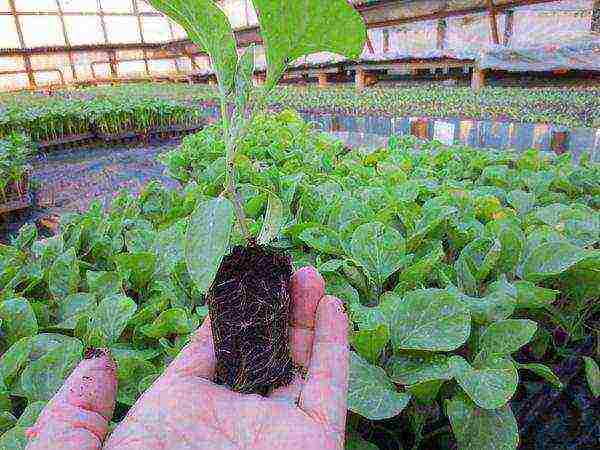
If the seedlings are grown on an industrial scale, then the sowing is done from mid-February to early March... It takes at least 65 days until the seedlings are transferred to the garden, which means that in early May, you can plan a transplant. It is possible to shift the sowing and transplanting dates by 7-10 days, if there are certain conditions.
In heated greenhouses, you can plant eggplant in the second half of January... Transplant dates with such a schedule are shifted to the beginning of April. This technology is not cheap, so it’s worth calculating the profitability first.
What is the scheme for planting seedlings
When planting seedlings, the main thing do not allow the beds to thicken, this leads to lower yields and an increased risk of infection with fungal diseases.
1 m2 is located about five plants in heated greenhouses, no more than three - in unheated structures. When forming beds in rows, adhere to the following intervals:
- row spacing - 60-65 cm;
- the distance between the holes in a row is 30-35 cm.
The depth of planting of seedlings is 15-18 cm. Favorable temperature conditions for the adaptation of young shoots correspond to 18-20 degrees (on the ground at least 15 degrees).
For varieties with spreading bushes, a scheme with a staggered arrangement of holes (an interval of 60 cm) is more suitable. Low-growing plants are planted in 2 rows with a row spacing of 65 cm, the distance between bushes in a row is 40-45 cm.
Care for the first shoots
After germination, seedlings need special conditions and temperature conditions. 18-20 degrees.
Lighting
To ensure this condition, you will need to install indoors fluorescent lamps... Additional lighting should be evenly distributed over all seedling containers.
Watering
Excess moisture can lead to the death of the plant, so the seedlings are watered sparingly. Regularity of procedures - 1 time in 3-5 days... Water is introduced in small portions into the soil, not onto the sprouts.

Top dressing and fertilizers
The first feeding is made after the first shoots appear... The choice of fertilizer is carefully considered, because the development of culture depends on its properties.
Some gardeners prefer liquid solutions, such as potassium nitrate (3 grams per 1 liter of water). When introducing liquid, try not to get on the greens, so as not to burn it. An ash solution is considered no less useful (a glass of ash for 7 liters of water). Fertilizer Kemira Lux (2 grams per 1 liter of water) has proven itself quite well.
The second feeding is applied after 3-4 weeks... Such products as Biohumus, Healthy Garden, Bioton have not lost their relevance. They are absolutely safe for the culture, but they do a good job with the task.
If the shoots have slowed down their growth, then it is recommended to use the following means: Agricola forte, Signor, Ideal.
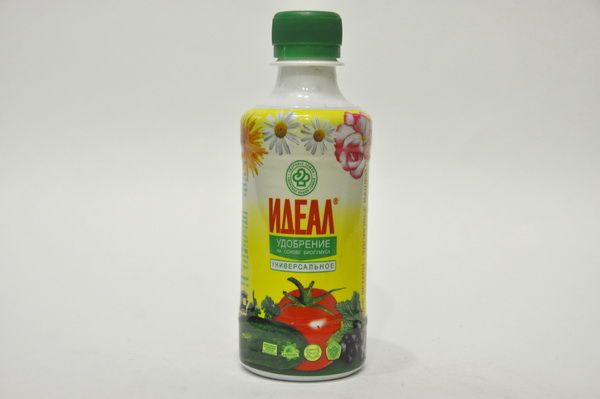
Care for grown eggplants
Pollination
The culture has bisexual flowers, the process of pollination occurs spontaneously... To enhance the effect in the morning hours, you can walk through the rows and shake each bush lightly. More drastic pollination measures are not provided.
Features of the formation of bushes
You can form in three ways: in one, two and three stems... The variant of plant formation is chosen solely taking into account the characteristics of the variety. Excess ovaries pull forces on themselves, preventing the rest of the fruits from developing, therefore, it is considered necessary to remove them.
When cultivating a vegetable in a greenhouse pruning is done 2 weeks after planting seedlings. For this, all processes located below the first branch are removed. After the formation of 4-5 shoots, pinch the top.
When carrying out this procedure, you can also focus on the height of the bush, it should be within 25-30 cm. For high varieties, you may need to tie up the bushes.
Watering and the necessary feeding
5 days after planting seedlings on greenhouse beds, you need to moisten the plants warm water... Further procedures to carry out at least once a week, better in the morning. Water is applied under the root of the plant to keep the foliage dry.
To maintain soil moisture, it is recommended mulch beds. This process replaces loosening, which is likely to damage the roots.
To prevent the development of fungal diseases, you need to regularly ventilate the greenhouse.
During the growing season, eggplants are fed 3-5 times... When cultivating a vegetable in a greenhouse, it is preferable to use complex fertilizers: Solution, Kemira universal (for a bucket of water, 1.5 tbsp. L. Means). After the formation of the ovaries, nitrogen-phosphorus fertilizers are used (for a bucket of water, 1 tsp. Ammonium nitrate, 1 tbsp. L. Superphosphate).
Organic products are also used for dressing, but they should not be overused, so as not to provoke an intensive build-up of greens. For eggplant, Biud is ideal (diluted with water in proportions of 1:20).
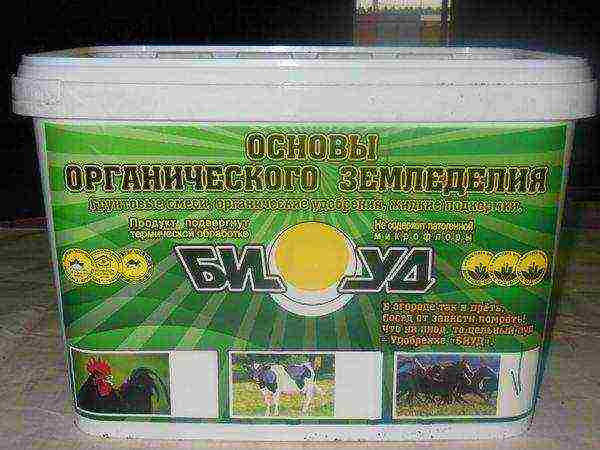
Possible difficulties in growing eggplant
When cultivating eggplant in a greenhouse, the following problems may arise:
- yellowing of the foliage (the reason often lies in the violation of the irrigation regime or the introduction of fertilizer, the disease is also not excluded);
- falling off of the ovaries (occurs as a result of a lack or excess of moisture);
- the bush develops well, and the ovaries are formed poorly (the reason lies in excessive feeding with nitrogen fertilizers or lack of pruning);
- the plant blooms, but does not bear fruit (better pollination is required);
- leaves curl (possible reasons: pests, excess moisture, lack of light);
- spots on the leaves (more often the cause is direct sunlight);
- weak growth of shoots after transplantation (the slowdown in development is more likely associated with the root system, you need to feed "Kornevin").
Harvesting and storage
You should not be guided by color, long before ripening, the skin of the fruit takes on a characteristic varietal color. The first clue would be the degree of firmness of the pulp... When you press on the eggplant, there will be a small dent that heals very quickly.
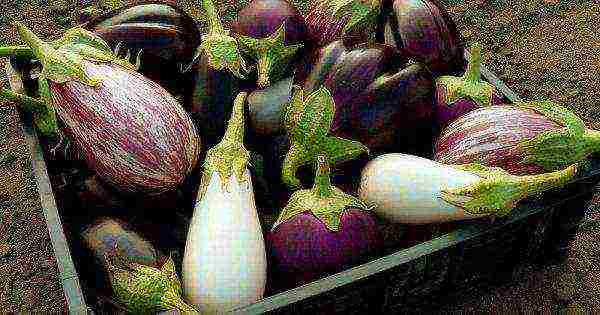
Ripe fruits are cut with pruning shears, leaving a tail of 3-5 cm.Choose a cool one for storage. dark place (more often the basement). Vegetables can be packed in boxes in 2 layers. To keep the harvest longer, vegetables are shuffled with straw or parchment paper. It is recommended to make an audit every 2 weeks in order to remove perishable copies from the box.
Reviews of gardeners about growing vegetables in greenhouses
Vladimir Ivanovich, 62 years old
Our Ural climate is not suitable for all vegetables, but especially for eggplants. What varieties have I not tried. My efforts are finally crowned with success - Mongolian dwarf showed himself in the most unexpected way. I took 7-9 fruits from the bush. I continue to experiment, but I will plant this variety, being confident in the harvest.
Taisiya, 47 years old
Until she found a suitable variety for greenhouse cultivation, she attributed her failed attempts at eggplant cultivation solely to her mistakes in care. After taking a sample from Black Prince and Mary, who generously disfigured, realized that the selection of seeds plays almost the main role.
Andrey, 30 years old
A small greenhouse complex is the source of my income, so I try to learn from the experience of other farmers to reduce risks.
Eggplant is a rather capricious plant, but, subject to the temperature regime and the feeding schedule, it generously endows with fruits. Agricultural technology does not include picking seedlings, and I replace loosening by mulching the beds. In recent years, the following varieties have pleasantly surprised: Carlson, Marzipan, King of the North, Lolita.
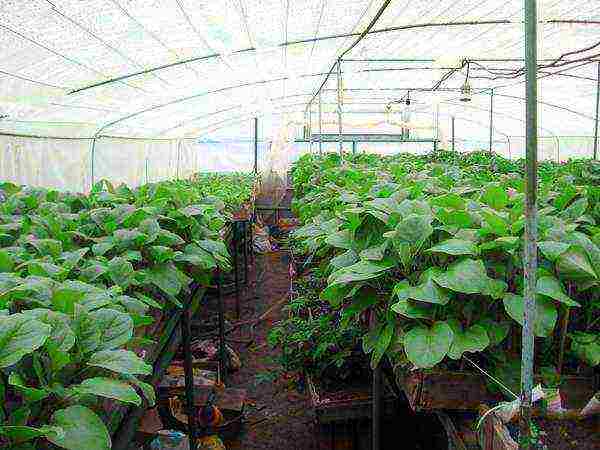
Valentina Kuzminichna, 59 years old
I plant the seeds 75 days before transplanting to the garden. To do this, I use small transparent plastic cups, filling them with the substrate by 2/3. I transfer it to the garden bed directly with the soil, so as not to damage the roots. I feed the plants every 10-12 days (Fertility humate, phosphorus-potassium fertilizers, wood ash).
Daria, 40 years old
For those who first decided to grow eggplants in their greenhouse, I advise pay attention to soil preparation and temperature control... The emerging yellowness on the leaves of seedlings signals a problem and most often it should be looked for in watering. Lack of water is as dangerous as its excess, and it is not easy to create an optimal regime in greenhouse conditions.
Following the clear rules of gardening, planting seedlings and harvesting a good eggplant harvest will work even in regions with a harsh climate. A greenhouse structure is able to provide proper conditions if surfaces and soil are disinfected in a timely manner, tied up, fertilized and looked after properly.


